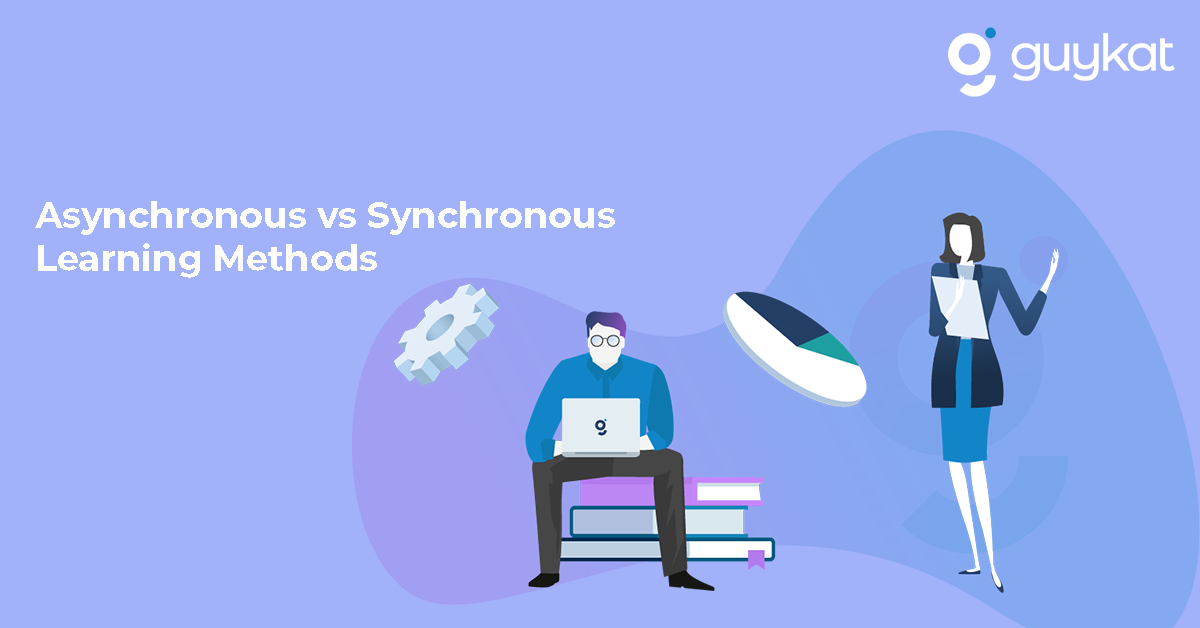You will often hear the terms ‘synchronous’, ‘asynchronous’ and ‘blended’ learning used by L&D professionals. These terms sound complex. They’re really not. Let’s demystify them…
What is synchronous learning?
This type of learning takes place with real people in real-time (hence ‘synchronous’). Participants are required to be present – think Zoom webinars, live lectures and video conferences. It allows participants to learn from each other’s expertise and perspectives while benefiting from dialogue with the instructor. With a predetermined agenda and time frame, multiple learners can interact in a set place and time.
What is asynchronous learning?
Asynchronous learning takes place on the learner’s own time, allowing them to learn at their own pace. To ensure participation, there is usually a set deadline to complete any tasks or evaluations. The asynchronous experience can be facilitated through online courses, independent work, or individual projects. Learners are given more control over the extent and time they participate in a course, which makes it ideal for self-directed learners.
Pros and cons of synchronous learning
Synchronous learning has several benefits:
- Foster a sense of community and encourage peer-to-peer collaboration and personal interaction to help knowledge retention.
- Allows participants to practice new skills in real-time.
- Provides a platform for a feedback loop, from both other learners and instructors.
- Clarifying any enquiries on the spot to help learn better through supportive instruction.
However, there are also some limitations to synchronous learning, such as:
- Difficulty keeping to a shared time, due to busy schedules or other commitments, and end up missing out on important modules.
- The instructor adheres to a common pace, which may not be ideal for slower learners.
- Online sessions can run the risk of technical difficulties. (e.g. spotty internet connection, website crash)
Pros and cons of asynchronous learning
The benefits of asynchronous learning are:
- Provides a great opportunity for those who prefer to learn on their own time with little contact from the instructor.
- Ideal for busy employees who don’t have time to attend live sessions.
- Allows for more time for self-reflection and going through the material multiple times.
- Accessible anywhere and anytime, in spite of different time zones or location.
There are also some disadvantages, like:
- Difficult for those who lack self-motivation.
- Lack of feedback and acknowledgement can be an issue for dependent learners.
- No real-time feedback.
Blended learning
Blended learning combines both online and offline learning deliveries, ultimately reaping the benefits of asynchronous and synchronous learning in one experience. Also known as a hybrid learning model, it allows instructors to take into account the personal learning styles and circumstances of each employee to suit their needs. Modules and courses take place both online and offline, asynchronously and synchronously, to create a myriad of instruction that is both engaging and accessible. One prime example that showcases the benefits of this combined approach is when participants are given online course supplies, allowing them to study it beforehand and discuss the material in person.
Final Thoughts
This all correlates with previous thoughts we’ve shared about when to use live instructor-led training and when to use eLearning modules. We just didn’t use fancy language!


